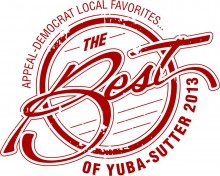
Blue Room: Science Fiction
This Fall the Blue Room begins with an introduction to some of the world’s greatest classic science fiction novels through the words of H.G. Wells and Jules Verne. Through the reading of these stories, students will experience space in an entirely new and exhilarating manner! Come and see what journeys your little ones will take through these classic stories.
Week 1: “War of the Worlds” Radio Broadcast by Orson Welles
Week 1 in the Blue Room is focused on one of the most famous radio broadcasts of all time: Orson Welles’ adaptation of H.G. Wells’ science fiction novel, “The War of the Worlds.” Orson Welles’ telling of the story was so realistic that on October 30th, 1938 thousands of people on the East Coast believed that what they were hearing on the radio was an actual news broadcast of an alien invasion! This broadcast launched Orson Welles into stardom and he will forever be in the history books for his realistic retelling of the classic, “The War of the Worlds.”
Week 1 Theme Objectives
- Be familiar with the term “science fiction” and the types of stories that fall into this category (i.e. aliens, time travel, space travel, etc.).
- Be familiar with H.G. Wells, the author of “War of the Worlds,” as well as Orson Welles, the actor who broadcast an adaptation of the story on air in 1938.
- Understand the importance of radio in 1938, when “War of the Worlds” was broadcast.
- Practice listening comprehension skills and be able to recollect parts of the story already listened to from previous days.
Week 2: “The Time Machine” by H.G. Wells
Week 2 in the Blue Room will be focused on another of H.G. Wells’ science fiction classics, “The Time Machine.” “The Time Machine” is about a professor who invents a machine that can take him through time. On his very first trip, the professor ends up traveling to the year 802,701 and encounters all of the amazing and frightening wonders that the future holds!
Week 2 Theme Objectives
- Be familiar with H.G. Wells, the author of “The Time Machine.”
- Be able to recollect parts of a story read from a previous day.
- Experience Expressive Reading and practice following the text of a story.
- Compare and contrast “The Time Machine” and “The War of the Worlds” and discuss why both are considered to be science fiction.
Week 3: “20,000 Leagues Under the Sea” by Jules Verne
Week 3 in the Blue Room will be focused on another science fiction classic, “20,000 Leagues Under the Sea,” by Jules Verne. In the story, Professor Aronnax begins a journey to catch the infamous sea monster, “the Thing” but things take an unexpected turn when he meets the mysterious Captain Nemo.
Week 3 Theme Objectives
- Be familiar Jules Verne, the author of “20,000 Leagues Under the Sea.”
- Be able to recollect parts of a story read from a previous day.
- Experience Expressive Reading and practice following the text of a story.
- Be familiar with characters of the story and discuss how each contributed to the story’s outcome.
Week 4: “Journey to the Center of the Earth” by Jules Verne
The last week of the month will again follow a similar format to that of weeks 2 and 3; however, week 4 will be focused on the graphic novel, “Journey to the Center of the Earth” by Jules Verne. A graphic novel differs greatly from the chapter books of weeks 2 and 3. The graphic novel, “Journey to the Center of the Earth” is full of colorful pictures and is more limited in the amount of text to be read. Also, instead of splitting up into small groups, this graphic novel will be read as a class, huddled close together in one cohesive group sharing the exciting trials and triumphs of the story together.
The story, “Journey to the Center of the Earth,” is another Jules Verne classic that follows the adventures of Axel Lidenbrock and his uncle through a secret passageway to the center of the earth. While there they encounter underground rivers, oceans and prehistoric monsters.
Week 4 Theme Objectives
- Be familiar with Jules Verne, the author of “Journey to the Center of the Earth.”
- Be familiar with the characteristics of a graphic novel.
- Be able to recollect parts of a story read from a previous day.
- Experience Expressive Reading.
Learning Goals
The following learning goals will also be addressed in lessons throughout the month. These learning goals are designed to introduce students to Kindergarten and First-Grade-Level concepts in developmentally and age-appropriate ways. Practice some or all of these concepts at home throughout the month to further your child’s comprehension of the concept!
Reading:
Follow words from left to right and from top to bottom on the printed page
Recognize that sentences in print are made up of separate words.
Distinguish letters from words
Reading Comprehension:
Ask and answer questions about essential elements of a text
Listening and Speaking:
Listen attentively
Literary Response and Analysis:
Distinguish fantasy from realistic text
Identify characters, settings and important events
Letters:
Recognition, Sounds and Writing: The learning of letters is worked into each and every lesson that students participate in in the Blue Room. Teachers plan “Alphabet Opportunities” so that students have ample time to practice letter recognition, phonics and letter writing throughout the month.
Green Room: The Universe
This fall the Green Room begins with our students experiencing space exploration! Students will experience the many wonders of space and be introduced to one of the greatest scientific minds in history: Galileo Galilei. Come explore and learn more about what your little one will learn in the Green Room this month!
Week 1: Astronomy & Galileo Galilei
Week 1 in the Green Room will be focused on the wonders of astronomy and one of history’s greatest scientists: Galileo Galilei.
Week 1 Theme Objectives
- Become familiar with the word astronomy and its definition.
- Be starting to become familiar with other words and ideas associated with astronomy such as the solar system, the planets, the universe, galaxies, etc.
- Become familiar with the life of Galileo Galilei and his accomplishments (i.e. the telescope, Jupiter’s moons, etc.)
Week 2: Earth, Moon and Sun
Week 2 in the Green Room will focus on introducing students to the Earth, Moon and Sun.
Week 2 Theme Objectives
- Know that we live on planet Earth, that we have a moon and Earth’s distance from the Sun (i.e. “3rd rock from the Sun.”).
- Know the approximate size of Earth in comparison to the other planets and what causes “day” and “night.”
- Be challenged to think about why the Sun is important to our existence as human beings.
- Be familiar with the phases of the moon and how to track them.
Week 3: Geology of the Solar System
Week 3 in the Green Room will be focused on the geology of the solar system. Students will learn about the geological make-up of several of the planets in our solar system and have an opportunity to compare what they discover to the geological properties of the Earth.
Week 3 Theme Objectives
- Be familiar with the number of and names of the planets in our solar system including dwarf planets.
- Discuss the science of Geology and how the geology of each planet is different.
- Be familiar with the geological properties of at least 2 planets.
Week 4: Space Exploration
The last week of the month will be focused on space exploration. Your students will be transformed into astronauts for the week allowing them to experience space through the windows of a space shuttle or the lens of a telescope! By the end of the week students will know just how society has learned so much about the universe.
Week 4 Theme Objectives
- Be familiar with the purpose of space exploration and the types of vehicles and equipment used.
- Have experienced what life would be like as an astronaut.
- Be familiar with at least 2 NASA missions (i.e. the moon landing, Mars pathfinder, International Space Station, etc.), including the importance of them and their outcomes.
Learning Goals
The following learning goals will also be addressed in lessons throughout the month. These learning goals are designed to introduce students to Kindergarten and First-Grade-Level -Concepts in developmentally and age appropriate ways. Practice some or all of these concepts at home throughout the month to further your child’s comprehension of the concept!
Physical Science:
Students know objects can be described in terms of the materials they are made of and their physical properties (i.e. color, shape, weight, texture, flexibility, etc.)
Students know that solids, liquids and gases have different properties
Investigation and Experimentation:
Describe the relative position of objects by using one reference (i.e. above or below, next to)
Measurement and Geometry:
Compare the length, weight and capacity of objects by making direct comparisons with reference objects (i.e. note which object is shorter, longer, taller, lighter, heavier, or holds more)
Numbers and Shapes:
The learning of numbers and shapes is worked into each and every lesson that students participate in in the Green Room. Teachers plan“Number and Shape Opportunities” so that students have ample time to practice number and shape recognition, number writing and shape drawing throughout the month.
Red Room: Planetarium
This Fall will begin by transforming the Red Room into a planetarium! Our students will have an opportunity to create three-dimensional versions of the Sun, Earth and planets along with distant galaxies and constellations! Please come and see what amazing planetary bodies your child will be building this month!
Week 1: Planetarium Introduction & Creating the Earth
Week 1: Planetarium Introduction & Creating the Earth

This month students will be transforming the Red Room into a planetarium! Students will have an opportunity to create three-dimensional versions of the Sun, Earth and planets! Weeks 1-3 will be spent building the Planetarium, and during Week 4 students will have the opportunity to gaze at all of the celestial wonders they have created!
Week 1 Theme Objectives
- Understand what a planetarium is and what its’ purpose is.
- Start becoming familiar with composer John Williams and his work.
- Have participated in the creation of Earth, the first component of the Red Room Planetarium!
Week 2: Creating the Sun & the Solar System
Week 2: Creating the Sun & the Solar System

Week 2 in the Red Room will follow a similar format to that of Week 1. Week 2 will be focused on building more of the Red Room Planetarium: the Sun and the Solar System!
Week 2 Theme Objectives
- Revisit the idea of a planetarium and review the aspects of the Red Room Planetarium already created (i.e. the Earth).
- Be starting to become more familiar with John Williams and his work.
- Have participated in the creation of the Sun and the remaining planets in our solar system for the Red Room Planetarium!
Week 3: Creating the Universe, Distant Galaxies & Constellations
Week 3: Creating the Universe, Distant Galaxies & Constellations

Week 3 in the Red Room will follow a similar format to that of Weeks 1 and 2. Week 3 will be focused on building more of the Red Room Planetarium: the Universe, Distant Galaxies and Constellations!
Week 3 Theme Objectives
- Revisit the idea of a planetarium and review the aspects of the Red Room Planetarium already created (i.e. the Earth, Sun and planets).
- Be familiar with the Hubble Telescope (i.e. what it looks like and how it operates) and the types of images it captures.
- Have participated in the creation of the Universe, distant galaxies and constellations for the Red Room Planetarium!
Week 4: The View of an Earthling
Week 4: The View of an Earthling

The Red Room Planetarium is finally complete! Now students will have the opportunity to view the celestial wonders of the Universe they have created!
Week 4 Theme Objectives
- Be familiar with all components of the Red Room Planetarium and be able to correctly identify them if asked.
- Create a telescope to view the wonders of the Planetarium.
- Discuss an Earthling’s view of the Universe and how a Martian’s view (or the view from another planet) of the Universe would be different.
Learning Goals
The following learning goals will also be addressed in lessons throughout the month. These learning goals are designed to introduce students to Kindergarten and First-Grade-Level -Concepts in developmentally and age appropriate ways. Practice some or all of these concepts at home throughout the month to further your child’s comprehension of the concept!
Music:
Create accompaniments, using the voice or a variety of classroom instruments.
Create movements that correspond to specific music
Visual Arts:
Identify the elements of art (line, color, shape, form, texture, value, space) in the environment and in works of art, emphasizing line, color and shape.
Use texture in two-dimensional and three-dimensional works of art.
Demonstrate the beginning skill in the use of tools and processes, such as the use of scissors, glue and paper in creating three-dimensional construction.
Art of the Month: Pictures from the Hubble Telescope
Composer of the Month: John Williams (“Star Wars” and “E.T.” Soundtracks)
Color:
Recognition & Primary vs. Secondary- Participating in learning opportunities for colors is an essential component of working in the Red Room. Students will be practicing their color recognition skills on a daily basis and have the opportunity to blend colors several times a month.




